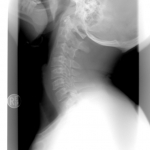Fibromyalgia Misdiagnosis: What Else Could it Be?
June 6, 2016
By David M. Brady, ND, DC, CCN, DACBN, author of The Fibro-Fix with Michael J. Schneider, DC, PhD It is important to know that only a small number of patients diagnosed with fibromyalgia actually suffer from this classic variety of the syndrome. As many as to 2/3 of people who are told they have fibromyalgia have actually received a fibromyalgia misdiagnosis and are really suffering from another problem. Fibromyalgia is the correct diagnosis only when all other medical and functional conditions have been ruled out. Doctors often use the single word fibromyalgia to diagnose a complex of symptoms that can have multiple causes. Worse yet, doctors often prescribe the same treatment package to all the patients they label with the term fibromyalgia. It is like using the term back pain and prescribing muscle relaxers to all patients with back pain. Sometimes the one-size-fits-all prescription may help patients get better, but not usually. There are 3 broad categories of these conditions - other than classic Fibromyalgia - that are most often the cause of widespread pain and fatigue. Unfortunately, the standard treatment approach for classic Fibromyalgia will not help patients with pain and fatigue caused by conditions within any of these 3 categories. So what’s the solution to this dilemma? Actually the answer is simple. Find the cause of the widespread pain and fatigue, and prescribe treatments that eliminate that cause.  Medical problems that may cause widespread pain and fatigue. Examples include hypothyroidism, anemia, MS, inflammatory arthropathies, autoimmune connective tissue disorders, and small fiber polyneuropathy. In patients who complain about generalized pain and fatigue, it is imperative that the doctor rule-out the presence of any medical condition or disease that is known to cause many of the symptoms associated with classic FM. Hypothyroidism, anemia, rheumatoid arthritis, Lyme disease, rheumatic auto-immune disorders such as ankylosing spondylitis (AS) or scleroderma, multiple sclerosis, small fiber polyneuropathy, and cancer are some possible causes for symptoms of vague and diffuse body pain associated with pronounced fatigue. Most of the medical assessment appropriate in this type of situation comes in the form of laboratory testing, to include any or all of the following screening tests:
Medical problems that may cause widespread pain and fatigue. Examples include hypothyroidism, anemia, MS, inflammatory arthropathies, autoimmune connective tissue disorders, and small fiber polyneuropathy. In patients who complain about generalized pain and fatigue, it is imperative that the doctor rule-out the presence of any medical condition or disease that is known to cause many of the symptoms associated with classic FM. Hypothyroidism, anemia, rheumatoid arthritis, Lyme disease, rheumatic auto-immune disorders such as ankylosing spondylitis (AS) or scleroderma, multiple sclerosis, small fiber polyneuropathy, and cancer are some possible causes for symptoms of vague and diffuse body pain associated with pronounced fatigue. Most of the medical assessment appropriate in this type of situation comes in the form of laboratory testing, to include any or all of the following screening tests:  Musculoskeletal problems that may cause widespread pain and fatigue: examples are trigger points, spinal joint problems such disc degeneration and pinched nerves. Myofascial pain syndrome is one of the most common reasons for a mistaken diagnosis of classic FM is pain that is actually arising from several muscles and joints of the body. Widespread pain is often caused by a few different painful conditions that all put together feel like just one big painful condition. This happens quite frequently with senior patients, who often have some degree of arthritis in several joints, combined with myofascial problems, and come to their doctor with a complaint of widespread pain. Many senior patients have an overlap of general widespread pain from arthritis, but also have one or two localized muscle or joint problems that could respond well to treatment by a physical therapist, chiropractor, or massage therapist. A basic principle of diagnosis can quickly determine if pain is coming from a muscle or joint. Certain movements should reproduce the exact pain being experiencing if the pain is coming from a musculoskeletal structure. For example, if the patient has pain between the shoulder blades coming from the neck or shoulders, movements of the neck or shoulders should cause the pain to get worse. If there is absolutely no movement or position that makes the pain worse, the pain may not be coming from a muscle or joint and other sources of the pain should be considered.
Musculoskeletal problems that may cause widespread pain and fatigue: examples are trigger points, spinal joint problems such disc degeneration and pinched nerves. Myofascial pain syndrome is one of the most common reasons for a mistaken diagnosis of classic FM is pain that is actually arising from several muscles and joints of the body. Widespread pain is often caused by a few different painful conditions that all put together feel like just one big painful condition. This happens quite frequently with senior patients, who often have some degree of arthritis in several joints, combined with myofascial problems, and come to their doctor with a complaint of widespread pain. Many senior patients have an overlap of general widespread pain from arthritis, but also have one or two localized muscle or joint problems that could respond well to treatment by a physical therapist, chiropractor, or massage therapist. A basic principle of diagnosis can quickly determine if pain is coming from a muscle or joint. Certain movements should reproduce the exact pain being experiencing if the pain is coming from a musculoskeletal structure. For example, if the patient has pain between the shoulder blades coming from the neck or shoulders, movements of the neck or shoulders should cause the pain to get worse. If there is absolutely no movement or position that makes the pain worse, the pain may not be coming from a muscle or joint and other sources of the pain should be considered.  Functional/Metabolic problems that may cause widespread pain and fatigue: examples are subtle functional hypothyroidism, inefficiency of energy production in the cells of the body due to mitochondrial dysfunction, nutritional insufficiencies (including vitamin D, CoQ10, carnitine, B vitamins, magnesium, etc.), chemical and food sensitivities, reactions to medications, and other problems with body metabolism and biochemistry. More subtle “functional” disorders may represent various types of sub-clinical disease states and disorders involving dysfunction of internal organs and individual metabolism, rather than true pathology. These functional disorders range the gamut from simple vitamin and mineral insufficiencies, to more hidden functional disorders such as energy metabolism disorders (mitochondrial dysfunction), subtle endocrine imbalances (subclinical thyroid disorders, abnormalities is stress physiology, etc.), opportunistic intestinal infections (dysbiosis), blood sugar abnormalities (reactive dysglycemia), post-viral immune suppression, and other conditions that are not readily apparent on standard laboratory screening tests. Dr. Brady’s new book, The Fibro Fix, will give you a wealth of information on how to negotiate your way toward getting the proper diagnosis and the proper treatment for your symptoms of widespread pain and fatigue. The book can be ordered on Amazon, Barnes & Noble, Books-A-Million and other fine book vendors, or at FibroFix.com. Also, learn more about The Fibro-Fix Summit where Dr. Brady interviews 30+ experts on FM at FibroFixSummit.com.
Functional/Metabolic problems that may cause widespread pain and fatigue: examples are subtle functional hypothyroidism, inefficiency of energy production in the cells of the body due to mitochondrial dysfunction, nutritional insufficiencies (including vitamin D, CoQ10, carnitine, B vitamins, magnesium, etc.), chemical and food sensitivities, reactions to medications, and other problems with body metabolism and biochemistry. More subtle “functional” disorders may represent various types of sub-clinical disease states and disorders involving dysfunction of internal organs and individual metabolism, rather than true pathology. These functional disorders range the gamut from simple vitamin and mineral insufficiencies, to more hidden functional disorders such as energy metabolism disorders (mitochondrial dysfunction), subtle endocrine imbalances (subclinical thyroid disorders, abnormalities is stress physiology, etc.), opportunistic intestinal infections (dysbiosis), blood sugar abnormalities (reactive dysglycemia), post-viral immune suppression, and other conditions that are not readily apparent on standard laboratory screening tests. Dr. Brady’s new book, The Fibro Fix, will give you a wealth of information on how to negotiate your way toward getting the proper diagnosis and the proper treatment for your symptoms of widespread pain and fatigue. The book can be ordered on Amazon, Barnes & Noble, Books-A-Million and other fine book vendors, or at FibroFix.com. Also, learn more about The Fibro-Fix Summit where Dr. Brady interviews 30+ experts on FM at FibroFixSummit.com.
What Else Could it Be?
 Medical problems that may cause widespread pain and fatigue. Examples include hypothyroidism, anemia, MS, inflammatory arthropathies, autoimmune connective tissue disorders, and small fiber polyneuropathy. In patients who complain about generalized pain and fatigue, it is imperative that the doctor rule-out the presence of any medical condition or disease that is known to cause many of the symptoms associated with classic FM. Hypothyroidism, anemia, rheumatoid arthritis, Lyme disease, rheumatic auto-immune disorders such as ankylosing spondylitis (AS) or scleroderma, multiple sclerosis, small fiber polyneuropathy, and cancer are some possible causes for symptoms of vague and diffuse body pain associated with pronounced fatigue. Most of the medical assessment appropriate in this type of situation comes in the form of laboratory testing, to include any or all of the following screening tests:
Medical problems that may cause widespread pain and fatigue. Examples include hypothyroidism, anemia, MS, inflammatory arthropathies, autoimmune connective tissue disorders, and small fiber polyneuropathy. In patients who complain about generalized pain and fatigue, it is imperative that the doctor rule-out the presence of any medical condition or disease that is known to cause many of the symptoms associated with classic FM. Hypothyroidism, anemia, rheumatoid arthritis, Lyme disease, rheumatic auto-immune disorders such as ankylosing spondylitis (AS) or scleroderma, multiple sclerosis, small fiber polyneuropathy, and cancer are some possible causes for symptoms of vague and diffuse body pain associated with pronounced fatigue. Most of the medical assessment appropriate in this type of situation comes in the form of laboratory testing, to include any or all of the following screening tests: - Complete red and white blood cell count with white cell differential
- Thyroid function tests; (total and free T3 & T4, TSH, and thyroid antibodies)
- Standard blood chemistry
- C-reactive protein (CRP) and/or erythrocyte sedimentation rate (ESR)
- Lyme, co-infections and rheumatic/autoimmune profiles (as necessary)
 Musculoskeletal problems that may cause widespread pain and fatigue: examples are trigger points, spinal joint problems such disc degeneration and pinched nerves. Myofascial pain syndrome is one of the most common reasons for a mistaken diagnosis of classic FM is pain that is actually arising from several muscles and joints of the body. Widespread pain is often caused by a few different painful conditions that all put together feel like just one big painful condition. This happens quite frequently with senior patients, who often have some degree of arthritis in several joints, combined with myofascial problems, and come to their doctor with a complaint of widespread pain. Many senior patients have an overlap of general widespread pain from arthritis, but also have one or two localized muscle or joint problems that could respond well to treatment by a physical therapist, chiropractor, or massage therapist. A basic principle of diagnosis can quickly determine if pain is coming from a muscle or joint. Certain movements should reproduce the exact pain being experiencing if the pain is coming from a musculoskeletal structure. For example, if the patient has pain between the shoulder blades coming from the neck or shoulders, movements of the neck or shoulders should cause the pain to get worse. If there is absolutely no movement or position that makes the pain worse, the pain may not be coming from a muscle or joint and other sources of the pain should be considered.
Musculoskeletal problems that may cause widespread pain and fatigue: examples are trigger points, spinal joint problems such disc degeneration and pinched nerves. Myofascial pain syndrome is one of the most common reasons for a mistaken diagnosis of classic FM is pain that is actually arising from several muscles and joints of the body. Widespread pain is often caused by a few different painful conditions that all put together feel like just one big painful condition. This happens quite frequently with senior patients, who often have some degree of arthritis in several joints, combined with myofascial problems, and come to their doctor with a complaint of widespread pain. Many senior patients have an overlap of general widespread pain from arthritis, but also have one or two localized muscle or joint problems that could respond well to treatment by a physical therapist, chiropractor, or massage therapist. A basic principle of diagnosis can quickly determine if pain is coming from a muscle or joint. Certain movements should reproduce the exact pain being experiencing if the pain is coming from a musculoskeletal structure. For example, if the patient has pain between the shoulder blades coming from the neck or shoulders, movements of the neck or shoulders should cause the pain to get worse. If there is absolutely no movement or position that makes the pain worse, the pain may not be coming from a muscle or joint and other sources of the pain should be considered.  Functional/Metabolic problems that may cause widespread pain and fatigue: examples are subtle functional hypothyroidism, inefficiency of energy production in the cells of the body due to mitochondrial dysfunction, nutritional insufficiencies (including vitamin D, CoQ10, carnitine, B vitamins, magnesium, etc.), chemical and food sensitivities, reactions to medications, and other problems with body metabolism and biochemistry. More subtle “functional” disorders may represent various types of sub-clinical disease states and disorders involving dysfunction of internal organs and individual metabolism, rather than true pathology. These functional disorders range the gamut from simple vitamin and mineral insufficiencies, to more hidden functional disorders such as energy metabolism disorders (mitochondrial dysfunction), subtle endocrine imbalances (subclinical thyroid disorders, abnormalities is stress physiology, etc.), opportunistic intestinal infections (dysbiosis), blood sugar abnormalities (reactive dysglycemia), post-viral immune suppression, and other conditions that are not readily apparent on standard laboratory screening tests. Dr. Brady’s new book, The Fibro Fix, will give you a wealth of information on how to negotiate your way toward getting the proper diagnosis and the proper treatment for your symptoms of widespread pain and fatigue. The book can be ordered on Amazon, Barnes & Noble, Books-A-Million and other fine book vendors, or at FibroFix.com. Also, learn more about The Fibro-Fix Summit where Dr. Brady interviews 30+ experts on FM at FibroFixSummit.com.
Functional/Metabolic problems that may cause widespread pain and fatigue: examples are subtle functional hypothyroidism, inefficiency of energy production in the cells of the body due to mitochondrial dysfunction, nutritional insufficiencies (including vitamin D, CoQ10, carnitine, B vitamins, magnesium, etc.), chemical and food sensitivities, reactions to medications, and other problems with body metabolism and biochemistry. More subtle “functional” disorders may represent various types of sub-clinical disease states and disorders involving dysfunction of internal organs and individual metabolism, rather than true pathology. These functional disorders range the gamut from simple vitamin and mineral insufficiencies, to more hidden functional disorders such as energy metabolism disorders (mitochondrial dysfunction), subtle endocrine imbalances (subclinical thyroid disorders, abnormalities is stress physiology, etc.), opportunistic intestinal infections (dysbiosis), blood sugar abnormalities (reactive dysglycemia), post-viral immune suppression, and other conditions that are not readily apparent on standard laboratory screening tests. Dr. Brady’s new book, The Fibro Fix, will give you a wealth of information on how to negotiate your way toward getting the proper diagnosis and the proper treatment for your symptoms of widespread pain and fatigue. The book can be ordered on Amazon, Barnes & Noble, Books-A-Million and other fine book vendors, or at FibroFix.com. Also, learn more about The Fibro-Fix Summit where Dr. Brady interviews 30+ experts on FM at FibroFixSummit.com. Download the Following Whitepaper to Learn More about How to Properly Diagnose Fibromyalgia:




















SHARE